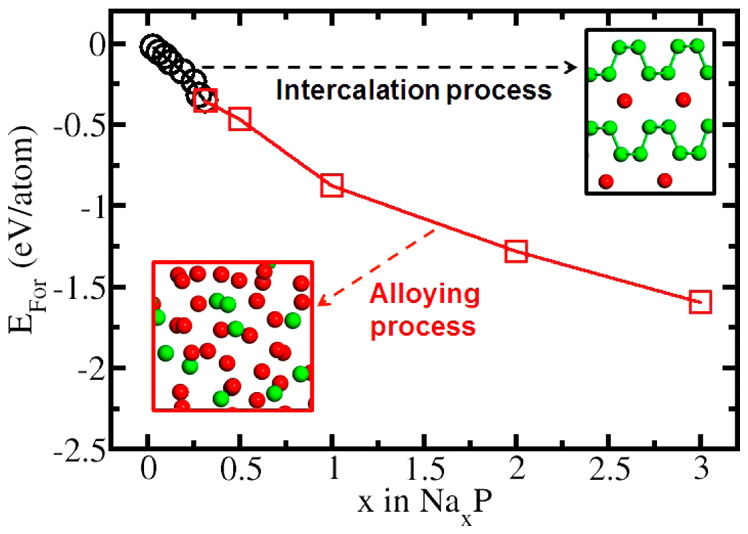Unraveling the Atomistic Sodiation Mechansim of Black Phosphorus for Sodium Ion Batteries by First-Principles Calculations
슈퍼관리자
2021-05-21
Unraveling the Atomistic Sodiation Mechansim of Black Phosphorus for Sodium Ion Batteries by First-Principles Calculations
-
Authors :
K. P. S. S. Hembram, Hyun Jung, Byung Chul Yeo, Sung Jin Pai, Seungchul Kim, Kwang-Ryeol Lee and Sang Soo Han
-
Journal :
J. Phys. Chem. C
-
Vol :
119
-
Page :
15041-15046
-
Year :
2015

Abstract
AbstractAs opposed to the standard graphite anode used for lithium (Li) ion batteries (LIBs), a standard anode material for sodium (Na) ion batteries (NIBs) has not yet been reported. Black phosphorus is potentially very attractive as an anode material for NIBs, as it has a layered structure similar to graphite but a greater interlayer distance. In this work, we propose an atomistic mechanism for the sodiation of black phosphorus, based on first-principles calculations. The layered structure of black phosphorus is maintained up to the composition of Na0.25P, with one-dimensional sodiation (an intercalation process) occurring in the interlayer spaces of the black phosphorus, resulting in sliding of the phosphorene layers because one Na atom tends to bind to four P atoms. At Na levels beyond Na0.25P, the intercalation process changes to an alloying process. Sodiation exceeding the critical composition leads to breaking of P–P bonds and eventual formation of an amorphous phase from the layered NaxP structure. After the P–P bonds in the layered NaxP structure are broken, in a progress in which staggered P–P bonds are preferentially broken rather than planar P–P bonds, P2 dumbbells are generated. As sodiation proceeds further, most of the P2 dumbbells become isolated P atoms. Thus, in the amorphous Na3P phase, only low-coordinate P components such as isolated atoms (primarily) and dumbbells are found. We expect that our comprehensive understanding of the sodiation mechanism in black phosphorus will provide helpful guidelines in designing new types of black phosphorus anodes to obtain better performing NIBs.
















